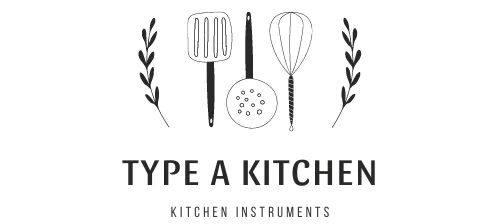Introduction:
Organizing your kitchen cabinets and drawers can be a daunting task, but it is an essential part of maintaining a functional and efficient cooking space. With the right approach and some simple strategies, you can transform your cluttered kitchen into a well-organized oasis where everything has its place.
we will explore practical tips and tricks to help you effectively organize your kitchen cabinets and drawers for maximum efficiency.
Whether you have a small galley kitchen or a spacious culinary haven, organizing your cabinets and drawers is crucial to maximizing storage space while keeping everything easily accessible. From decluttering unnecessary items to implementing smart storage solutions, we will guide you through step-by-step instructions on how to tackle each area of your kitchen for optimal organization. So let’s dive in and discover how to create a well-organized kitchen that will make meal prep a breeze!
Overview of How to organize kitchen cabinets and drawers
One important aspect of organizing your kitchen cabinet and drawers is to declutter and get rid of any items that you no longer use or need. Once you have sorted through your items, it’s time to think about the best way to store them in your cabinets and drawers. Consider using adjustable shelves or drawer dividers to maximize the available space and keep similar items together.
Another tip for organizing your kitchen cabinets is to group items based on their frequency of use. By decluttering, categorizing, and strategically arranging your kitchen cabinet and drawers, you can create a more functional and efficient space for meal preparation and cooking.
10 ways how to organize kitchen cabinets and drawers
1. Declutter:
Decluttering your kitchen cabinets and drawers is an essential step in creating a more organized and functional space. Start by emptying out all the contents of each cabinet and drawer, taking stock of what you have. As you go through each item, ask yourself if it is necessary, useful, or brings you joy. Let go of any items that no longer serve a purpose or are duplicates.
2. Categorize Items:
Start by separating your belongings into different categories based on their function or usage. This will help you easily locate specific items when you need them and prevent unnecessary clutter. Categorizing can also extend to food storage containers – separate them according to their size or shape. Finally, consider categorizing your pots and pans based on size or type.
For example, create a designated space for cooking utensils such as spatulas, tongs, and whisks. Keep similar items together in a drawer or container so that they are easily accessible. Similarly, group all your baking supplies like measuring cups, spoons, and cookie cutters in one place.
3. Utilize Drawer Dividers:
By using drawer dividers, you can separate your cooking utensils into different sections based on their type or size. This not only makes it easier to find the utensil you need when cooking but also prevents them from getting tangled up or damaged.
Similarly, in your spice cabinet, dividers can be used to categorize spices by type or alphabetically so that you can quickly locate the one you need without having to dig through a messy pile.
4. Use Clear Containers:
These transparent storage solutions allow you to easily see what’s inside without having to rummage through each container. By using clear containers, you’ll be able to quickly locate ingredients or utensils, saving you time and effort during meal preparation.
Overall, incorporating clear containers into your kitchen organization strategy can bring numerous benefits – easy visibility of contents, improved aesthetics, and efficient space utilization – making them an essential component for maintaining an orderly and functional kitchen environment.
5. Maximize Vertical Space
One effective way to maximize vertical space in kitchen cabinets and drawers is by using shelf risers. These handy tools create additional levels within the cabinet, allowing you to store more items without taking up extra horizontal space.
By placing larger items on the lower level and stacking smaller ones above, you can make efficient use of the available vertical room. Another strategy is to use hooks or adhesive hangers on the inside of cabinet doors.
6. Install Cabinet Door Organizers:
One effective way to maximize space and keep your kitchen cabinet organized is by installing cabinet door organizers. These handy additions can instantly create extra storage options for small items, such as spices, cleaning supplies, or even baking essentials. By utilizing the inside of your cabinet doors, you can free up valuable shelf space and ensure that everything has its designated place.
7. Adjust Shelf Heights:
To start, take a look at your current cabinet setup and assess whether there is wasted vertical space. If there are significant gaps between shelves that are not being utilized efficiently, consider readjusting them to accommodate larger items such as small appliances or tall bottles.
Remember to measure the height of your tallest items before making any adjustments to ensure they will fit within the newly adjusted shelf heights.
8. Use Lazy Susans:
incorporating Lazy Susans into your kitchen organization strategy is an effective way to enhance accessibility while maintaining orderliness in your cabinets. With their ability to rotate smoothly and showcase all your items effortlessly, they streamline meal preparations by eliminating unnecessary searching and shuffling through cluttered shelves.
Whether used for spices or various condiments, these simple yet practical additions transform chaotic cabinets into organized spaces where everything has its place within easy reach.
9. Label Containers and Shelves:
Start by sorting your pantry items into categories such as grains, spices, canned goods, etc., and then label each shelf accordingly.
In addition to labeling shelves, it’s essential to label containers within your cabinets as well. Use clear bins or jars that allow you to see the contents easily and apply labels indicating the type of food stored inside. Consider using dividers or organizers within drawers and label each section based on its purpose.
10. Regular Maintenance:
One important aspect of regular maintenance is cleaning. Regular maintenance also includes checking for any signs of wear or damage. Inspect the hinges, handles, and sliders on your cabinets and drawers regularly to ensure they are working properly.
If you notice any loose screws or broken parts, make sure to tighten or replace them as soon as possible to prevent further damage. It’s also a good idea to periodically reorganize the contents of your cabinets and drawers to keep them efficient and clutter-free.
Conclusion:
Organizing your kitchen cabinet and drawers can greatly improve the functionality and efficiency of your kitchen space. By taking the time to declutter, categorize items, and utilize storage solutions such as bins and dividers, you can create a system that makes it easy to find what you need when you need it.
Remember to regularly reassess and reorganize as needed to maintain order and prevent clutter from building up again. With a well-organized kitchen, meal preparation will become a breeze and you’ll enjoy spending time in this important room of your home. Start organizing today and experience the benefits firsthand!



